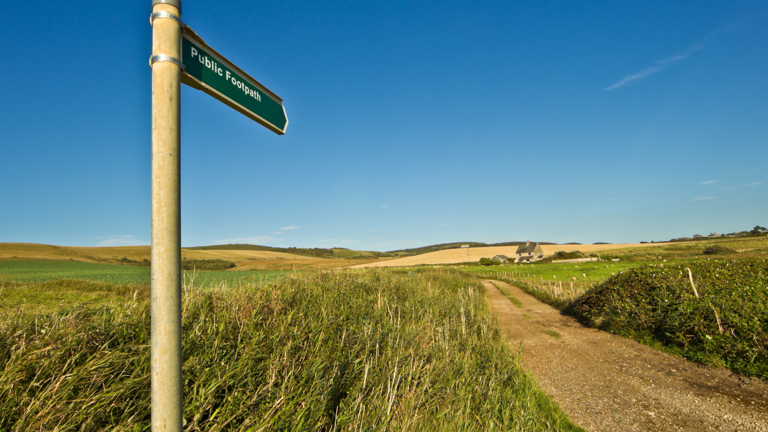The Department for Environment, Food & Rural Affairs (DEFRA) has announced that a cut-off date of 1 January 2031 is to be introduced for recording historic public rights of way in England.
Following the cut-off, public rights of way, such as footpaths and bridleways, which existed prior to 1 January 1949 but which have not been recorded on the Definitive Map and Statement (where details of public ways are set out), will be extinguished, and the opportunity to apply to have them recorded will be lost.
The proposed cut-off has been welcomed by landowners as it will give them more certainty. Currently, and until the cut-off takes effect, anybody can apply to have historic public rights of way recorded on the Definitive Map on the basis that a way has always existed. Applications should be supported by evidence, including historic maps which show the right of way. This can cause uncertainty for landowners, who may be unaware that there is a historic public right of way over their land, and can give rise to unfortunate situations, such as the recording and subsequent use of a footpath through the middle of an agricultural field, a working farmyard, or the garden of a family home, which is likely to have a major impact on value.
In recent years, a cut-off of 1 January 2026 had been proposed, although last year DEFRA indicated that it would be scrapped. After lobbying from bodies such as the Country Land and Business Association (CLA), DEFRA has done a U turn, albeit that the cut-off has been pushed back to 2031. The new date set will need to be introduced via amendments to the Countryside and Rights of Way Act 2000, and whilst it appears that the change will be introduced in England, the Welsh Government has not indicated that it will do so.
The change is likely to lead to an increase in applications for historic rights of way to be recorded, particularly by groups such as The Ramblers, which is actively encouraging members to uncover unrecorded rights of way. Landowners are given the opportunity to comment on applications which affect their land and, not surprisingly, most wish to object.
In addition to historic routes, public rights of way can also come into existence via presumed dedication. Pursuant to the Highways Act 1980, if a way is enjoyed by the public as of right and without interruption for a full period of 20 years, it is deemed to have been dedicated as a public way unless there is sufficient evidence that there was no intention to dedicate it. Dedication can also happen under common law, which does not specify a period of use.
The rules on dedication are not expected to change, therefore, the actions that can be taken by landowners to make clear that they have no intention to dedicate will still be needed to reduce the risk of dedication. These actions include the deposition of a statement with the local authority under section 31(6) of the Highways Act 1980 which confirms that there is no intention to dedicate, and the placement of signage on the land.
If you need assistance with a legal matter relating to public rights of way, or have any queries regarding planning law, please contact Mark Turner or a member of our Planning, Environmental, Energy & Regulatory team for support.
Key Contact

Mark Turner
Planning, Environmental, Energy and Regulatory Partner
Mark advises clients on a wide range of planning matters including applications and appeals, Certificates of Lawfulness, High Court challenges and Judicial Reviews, and enforcement.


